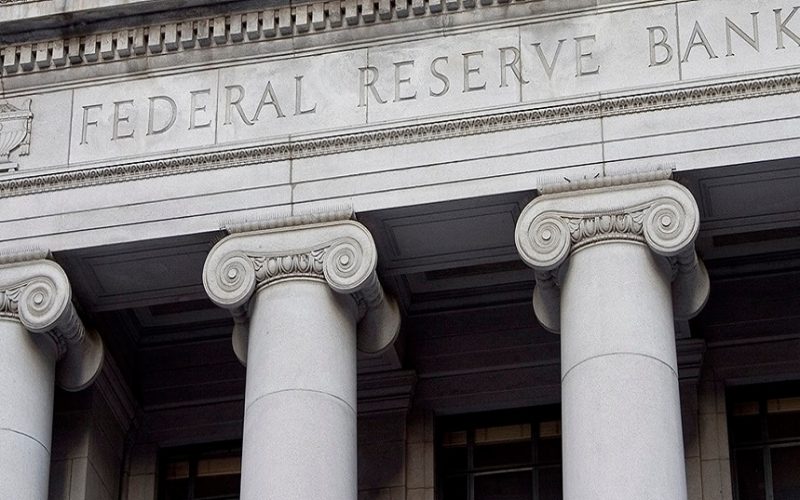by Liz Ann Sonders, Chief Investment Strategist, Charles Schwab & Company Ltd.
Key Points
- There were no changes to either interest rate or balance sheet policy that came out of the April FOMC meeting; but the economic outlook was upgraded a bit..
- The Fed plans to adjust policy based on outcomes vs. forecasts—a shift relative to its past approach to interest rate and balance sheet policy.
- Although inflation has been heating up, for now, the Fed has been liberally using the term “transitory” to qualify the risk.
As expected, the Federal Open Market Committee (FOMC) kept interest rates unchanged, while continuing the pace of its asset buying at a $120 billion monthly pace. It was a unanimous decision. The Fed strengthened its outlook for the economy, noting in the FOMC’s statement, “Amid progress on vaccinations and strong policy support, indicators of economic activity and employment have strengthened.” In addition, the Fed highlighted that the “sectors most adversely affected by the pandemic remain weak but have shown improvement.” With regard to one of the hottest topics lately—inflation—the Fed used a word we expect to hear/read a lot over the next few months: “Inflation has risen, largely reflecting transitory factors.”
Although the FOMC statement did have a more optimistic tone than the one following the March FOMC meeting, it was not without some expression of ongoing concerns; noting that “risks to the economic outlook remain,” which was softened from the March statement, which qualified risks as “considerable.” This week’s meeting did not include an update to the Fed’s Summary of Economic Projections (SEP), which are updated at every other FOMC meeting. But private sector forecasts have been improving; including among economists surveyed by Bloomberg, who expect the U.S. economy to expand this year at the fastest pace in more than 30 years. Those economists also expect the Fed to announce, by late-2021, that it will start to taper its balance sheet by slowing the pace/reducing the quantity of asset purchases.
Dual mandate
As a reminder, the Fed has a dual mandate around inflation and employment. Last year, the Fed made adjustments to the former by changing the prior 2% “target” to a 2% “average.” This essentially means the Fed will be comfortable with inflation running a bit “hot” for a while, to compensate for the lengthy span during which it ran below 2%. As such, the Fed is utilizing the rear view mirror more than the windshield—basing policy changes on actual economic outcomes, not forecasts. As we have been pointing out, “base effects” (comparisons to last year’s depressed conditions), as well as supply shortages/supply chain disruptions, are contributing to a rise in inflation via traditional measures—and even more so in areas like commodity prices. But these are expected to fade via a combination of base effects becoming less of a factor by early-summer; as well as supply catching up to demand as the global economy opens more fully.
The Fed also made a less-formal change to how it thinks about its employment mandate; looking not just for a decline in the unemployment rate, but the breadth/equality aspects to the decline. This suggests that a string of not only powerful monthly labor market gains would be needed to merit “substantial further progress” on their mandate; but broad participation by all segments of the economy in terms of job growth. Fed Chair Jerome Powell has been clear in his recent commentary that “digging out of the deep hole caused by the pandemic” is a process that is “uneven and far from complete.”
Presser highlights
- Powell was asked whether the Fed was yet “thinking about thinking about raising rates” and he reiterated that “it is not time yet” and that the Fed will telegraph future moves (regarding either asset purchases or rates) well in advance.
- Powell said it’s unlikely that inflation expectations would start moving up markedly while there remains significant slack in the labor market.
- Powell reiterated that the Fed is well aware of the systemic inflation problem of the 1970s; but that there are “many, many differences” between now and then.
- With regard to long-term economic “scarring” from the pandemic, Powell said that “we haven’t experienced” the downside case that was a worry last year; but that “we’re a long way from full employment.”
- Powell said that a string of good job readings is what the Fed wants to see; and that March’s strong report was just “one good report” so far.
- When asked about housing, Powell expressed his view that there is no bubble; but that the Fed is watching the acceleration in home prices carefully.
- Powell does believe some of what’s occurring in equity markets “reflect froth” but that the Fed operates with a broad lens with regard to overall financial stability.
- Markets’ reaction/summary thoughts
The bond market had a muted reaction to the FOMC statement; but equities shot higher in the immediate aftermath of the statement’s release, before settling down. The 10-year Treasury bond yield has been in a fairly stable range around 1.6% over the past month; prior to which it had surged from 0.9% at the start of this year to more than 1.7% by late-March. Our chief fixed income strategist Kathy Jones believes that the latest pause in yields is just that—a pause in the upward trajectory, not a reversal.
A key metric to watch in the near-term is the Employment Cost Index (ECI). The consensus expectation is for a year-over-year gain of 2.3% for total compensation; which would be down from the cycle high of 2.9% in the fourth quarter of 2018. If that pans out as expected, it’s unlikely the Fed will become more worried about inflation pressures—at least those stemming from rising wages or other employment costs. Wages and benefits comprise the largest share of costs for companies in the aggregate; so if they’re rising rapidly, it’s usually an indication of a tight labor market and building inflation pressures longer-term.
Assuming continued inflation pressures lead to another move higher in yields, the implication for equities will be a function of the make-up of the yield rise (inflation vs. growth components), as well as its speed. A sharp rise in yields, like seen in February, would likely boost equity market volatility and put further downward pressure on higher-multiple segments of the equity market. This helps to explain why “value” is the best performing factor over the past month, as well as year-to-date, relative to the other 16 factors Bloomberg tracks.
In the press conference, Powell addressed speculative froth evident in pockets of the equity market; something we have been regularly pointing out over the past few months. Even though tighter monetary policy—typically an expansion “killer”—is not imminently on the horizon, this is not a time for investors to toss aside disciplined investing in favor of momentum-chasing. Frothy sentiment conditions in and of themselves don’t signal a near-term risk of a contrarian move in stocks; but it does mean risk is high for volatility and/or a pullback if there are any emerging negative catalysts. Diversification (across and within asset classes) as well as periodic rebalancing are key tools investors should deploy when the investment landscape becomes riskier.














